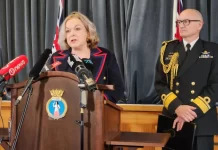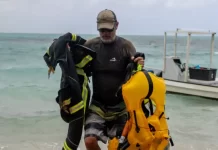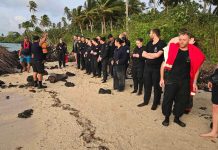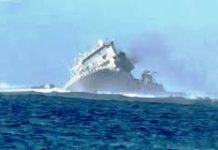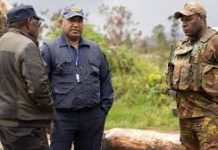One of the largest fisheries surveillance operations in the world, Operation Kurukuru, came to a successful close today, marking a return to full operational strength post-covid.
Pacific Islands Forum Fisheries Agency (FFA) Director Fisheries Operations Allan Rahari said the team had utilised the difficult operating conditions during covid to test emerging technologies, increase training and enhance focus on boarding and inspection capability.
“We didn’t have any gaps in our Operations during Covid-19 thanks to our use of virtual platforms and latest technologies, but having all the human resources back together for our Operation has been invaluable for ensuring compliance of vessels,” said Rahari.
“The collaboration between FFA staff, our Member countries and our Quadrilateral partners (Australia, New Zealand, USA and France) is a uniquely Pacific approach to protecting this enormous area of ocean that we cover. It also includes a multi agency approach involving local and regional partners, including Fisheries, Maritime Police, Defence Forces, and other maritime security agencies.
The FFA-coordinated Operation included 19 seconded officers within the Regional Fisheries Surveillance Centre from Australia, Fiji, Kiribati, Papua New Guinea, Samoa, Solomon Islands, Tonga, Tuvalu, U.S and Vanuatu. The team supported Members to collate, analyse and filter data in order to improve national and regional surveillance efforts and encourage and coordinate members’ monitoring and surveillance activities in EEZ’s and the high seas in the fight against Illegal, Unreported and Unregulated (IUU) fishing. Throughout the operation they also encourage cooperative surveillance engagement between parties under existing agreements, such as the Niue Treaty Subsidiary Agreement (NTSA),
The Operational area consisted of the 15 Pacific Island FFA Members’ Exclusive Economic Zones and adjacent High Seas. The Operational Area was over 23 million square kilometres in size, which is over three times the land mass of Australia.
The FFA Regional Fisheries Surveillance Centre coordinated intelligence to support all national headquarters, and inform the deployment of seven planes, satellites and 12 ships. There was also remote sensing support from the Government of Canada using satellite data to ID potential dark targets.
SOURCE: FFA/PACNEWS







